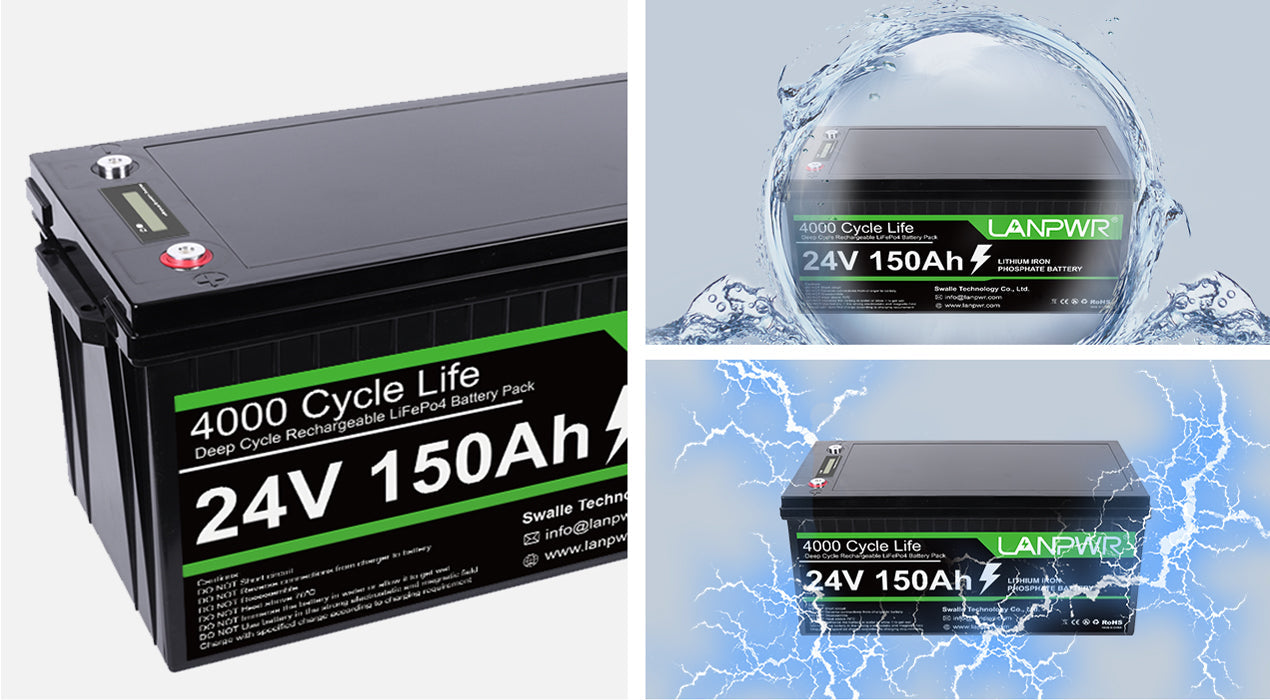Portable power stations have quickly become an invaluable asset to anyone needing reliable electricity on the move. Offering silent and emission-free power wherever required, portable power stations provide silent energy solutions when camping, working remotely, or preparing for emergencies.
Understanding their key features and many benefits is vital. Before discussing their myriad uses and benefits, we are going to dive into critical factors, including capacity, output ports, charging options, weight considerations, and inverter type.
Key Things You Should Know about Portable Power Stations
- Capacity
Capacity (measured in Watt-hours - Wh) is one of the critical aspects of any portable power station, determining its ability to store energy for later delivery to devices before needing another recharge cycle. Your capacity depends on what devices and how often you plan to charge them; for instance, a 500Wh power station could refuel an iPhone approximately 40-50 times or run a small refrigerator for up to 8-10 hours. 
2. Output Ports
The versatility of a portable power station largely depends on the variety and number of output ports it offers. Common outputs include:
- AC Outlets: For devices that require standard wall plugs.
- USB Ports: Including USB-A and USB-C for charging smartphones, tablets, and other USB devices.
- DC Carports: Useful for devices that typically charge in vehicles.
- Specialized Ports: Such as Anderson Powerpole ports for higher power demands.
The configuration and number of these ports affect how many devices can be charged simultaneously and the types of devices that can be powered.
- Charging Options
It is critical to maintain battery life by offering multiple charging capabilities for power stations while making sure they can adapt to different situations.
AC Adapter: Most power stations can be charged using standard AC wall outlets.
Solar Panels: Many home power stations can have solar panels for off-grid use and eco-conscious consumers, offering convenient power.
Car Charger: Charging while traveling provides convenience during road trips by ensuring the power station is ready when arriving at its destination.
- Size and Weight
A power station's portability depends heavily upon its size and weight; when considering these criteria for selection, you should consider how you plan to use it. Lighter models work best for day trips with light power needs, while heavier, larger units offer the capacity you may require for extended stays with more demanding needs.
- Inverter Type
A portable power station's inverter converts DC power from its battery into AC for devices, so its quality of power output depends on which inverter it uses:
Sine Wave Inverters tend to be cheaper but may cause issues for electronics with sensitive requirements;
Pure Sine Wave Inverters: These power supplies offer electricity comparable to or better than grid power, making it suitable for sensitive electronic equipment like medical and high-precision tools.
Advantages of Portable Power Stations (PPSs)
Portable power stations offer significant environmental advantages over generators because they operate without combustion, noise pollution, or harmful emissions.
Convenience and Safety
With no fuel needed and minimal maintenance requirements, these power stations simplify life while being safer around children and animals alike. Plus, they feature safeguards to avoid overcharging, overheating, or overloading power sources!
Versatility
Portable power stations provide flexible power solutions for outdoor activities, emergency backup power, and mobile businesses. They can power everything from lamps and laptops to CPAP machines and small appliances!
Reliability
Portable power stations can make an important difference during emergencies like natural disasters or unexpected power outages; be prepared by charging them up before leaving home so they can be used when disasters strike!
Access and Flexibility
Portable power stations can significantly expand your ability to work and communicate in areas without access to traditional electrical power sources, making life easier for professionals in fields like photography, videography, and research where work often occurs outdoors or is otherwise inaccessible to conventional power sources. Powering lights, cameras, laptops, and other essential gear extends productive hours and improves work quality significantly.
Ease of Use
One of their greatest strengths at Portable Power Stations lies in their user-friendliness. In contrast to gas generators that require regular oil changes and fuel refills, portable power stations require almost no ongoing maintenance - they can be charged and used whenever needed with no special preparation required beforehand. Their user-friendly designs often include user interfaces with digital displays providing real-time monitoring of power usage status/battery life monitoring, allowing access by those not technically inclined.
Quiet Operation
Portable power stations feature silent operation, offering significant advantages over traditional gasoline generators, which produce noise and vibrations. This makes power stations ideal for use at events, late-night activities, campgrounds, and residential areas where noise might otherwise be disrupted or prohibited.
Backup Power
A portable power station provides essential backup in a power outage, keeping critical devices such as medical CPAP machines, home healthcare equipment, and communication devices running. Hence, users receive updates or alerts as usual.
Educational and Recreational Uses
Portable power stations enhance educational and recreational activities alike. From powering scientific equipment in remote study locations to providing electricity on educational outings to supporting recreational gadgets during family camping trips or picnics - portable power stations add comfort and ease to leisurely pursuits.
Portable Power Stations Utilizing Clean Energy
For those committed to reducing their carbon footprint, portable power stations fueled with renewable sources like solar panels effectively use clean energy efficiently while aligning with rising environmental concerns and encouraging sustainable habits.
Cost-Effective
Using a portable power station is usually cost-effective in the long run. While the initial investment may be higher than some alternative solutions, its reduced fuel expenses and easy maintenance make it financially sensible in the long term. Modern lithium batteries also ensure reliable operation, which provides long-term operation reliability and reduced service calls from repairers.
Final Word
Portable power stations are a testament to advancements in battery technology and energy management. They meet the growing demand for mobile, convenient, and reliable power solutions in today's connected world. By understanding the key features and benefits of these stations, consumers can make informed decisions about which model best suits their power needs, ensuring they have the right balance of capacity, portability, and functionality to stay powered wherever they go.














Leave a comment
This site is protected by hCaptcha and the hCaptcha Privacy Policy and Terms of Service apply.